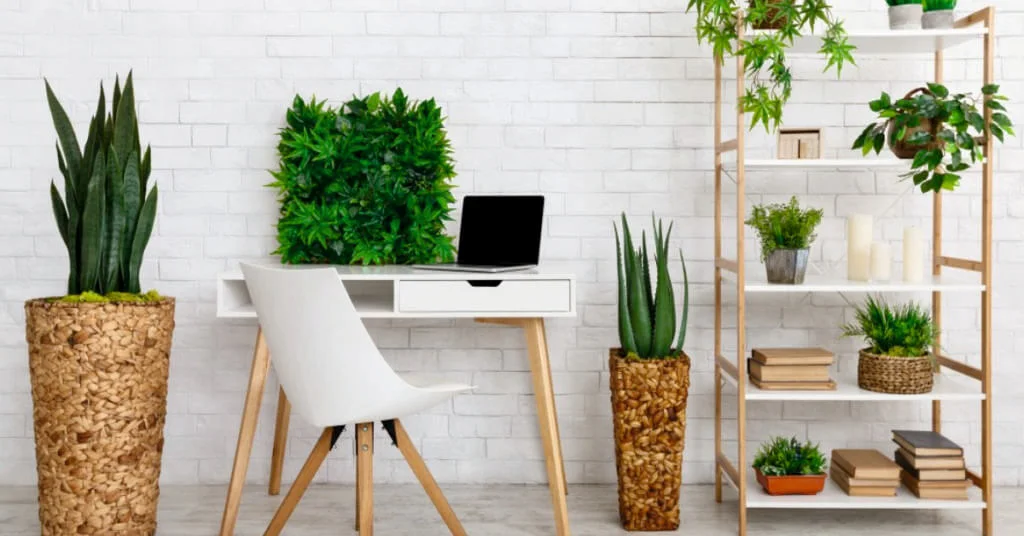
Working green is the new normal. If your workplace needs an environmentally friendly overhaul, this guide breaks down the definition of a green/sustainable building, how an organization can reduce its office eco-footprint, and the benefits of a sustainable workplace, including energy expenditure and increased productivity.
What is a green workplace?
Agreeing with the Green Building Committee of Australia: “Green Buildings join plan, development and operational hones that essentially decrease or kill its negative effect on the environment and its occupants”. The point of a Green Building is to diminish the generally natural effect or biological impression of a building or office, amid development and over the life of the building through ‘built-in’ sustainability. Building green is an opportunity to utilize assets effectively whereas making more beneficial situations for individuals to live and work in. Illustrations of building green incorporate:
- Reducing the use of material resources, waste & environmental degradation
- Reducing pollution of air, earth, and water in material sourcing & manufacturing, during construction and over the life cycle of the building
- Reducing damage to natural systems & bio-diversity
- Efficient energy, water & resources
- Providing high quality & healthy productive spaces, utilizing elements such as natural light and responsive heating/cooling measures
These can all be connected to the standards of maintainable advancement which a green or feasible building ought to reflect: natural security, financial advancement, and social improvement.
Benefits of Sustainability in the Workplace
Because sustainability is a multifaceted concept, there are several paths an organization can take to achieve it. Broadly speaking, these paths fall into two distinct categories: modifying the environment through what is known as sustainable design and altering business practices to create a culture of sustainability. Both approaches come with their own sets of benefits and can be successfully combined to maximize the effects.
Recent studies have shown that green workplaces:
- Reduce the average sick days per employee
- Reduce sick leave costs
- Improved productivity
- Increase job satisfaction
- Talent retention
Advantages of Sustainable Design
Sustainable design also referred to as environmentally conscious or eco-design, is an umbrella term for the process of creating products with minimal environmental footprint. Nowadays, sustainable design can be found in many industries, from issuing green certifications in building construction to extending the lifespan of consumer products and encouraging recycling. In the workplace context, sustainable design mostly manifests in constructing offices with low energy consumption and efficient resource use.
How to reduce your office’s environmental footprint
Reducing your environmental footprint helps you waste less energy, reduce operational expenditure, and invest in your people.
Here are proactive things you can do:
Reduce the amount of energy & water usage in your office
- Use sensors to control lights in low-use areas & timers for after-office hours
- Utilize energy-efficient light bulbs
- Utilize natural light/daylighting to its full potential where possible in your office
- Use recycled water for bathrooms
- Look into rainwater storage options in your building
- Encourage water-saving practices in common areas of your workplace, e.g. kitchens
Minimise waste during construction & building operations
- Incorporate recycled and/or responsibly produced materials into your building/office design (check ethical production registers for provenance)
- Only order the necessary amount of material & responsibly dispose of any excess
- Consider the heating & cooling of your office space during construction
- Use sufficient insulation to reduce the need for artificial temperature controls thus reducing energy costs
- Increase natural ventilation when building your office space through consideration of window placement, etc.
Use green power
- Research the possibility of creating an onsite generation of renewable energy sources such as solar & wind power
- Design for disassembly & material re-use
- Consider the future of the products and materials you are using and how they may be reused in your office space as time goes on
Utilise furnishing & fittings with non-toxic off-gassing
- Off-gassing is the release of a gas that was trapped, dissolved, or absorbed in some material. There are concerns that in closed environments some industrial products can produce gases that may be harmful to human health.
- Be sure to research the origins and makeup of your materials to ensure a healthy atmosphere in your workplace
Consider parking & transport to your office location
- Aim to promote the use of public transport if choosing a new office location
- Offer storage facilities to encourage the use of other modes of transport, e.g. bicycle racks
